AMD Teases Radeon RX 480: Launching June 29th For $199
by Ryan Smith on May 31, 2016 10:00 PM EST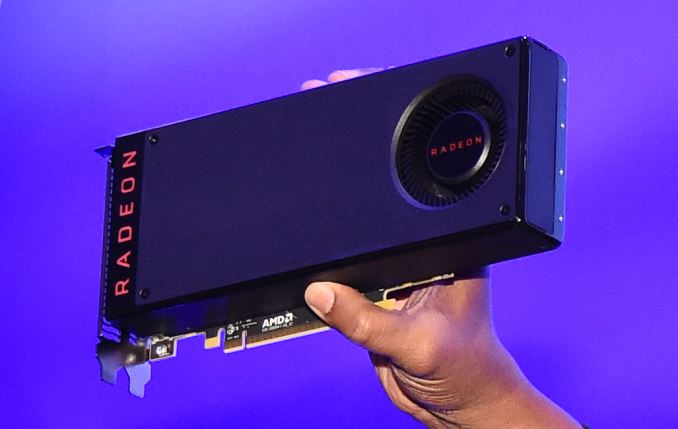
Kicking off at this moment is AMD’s Computex 2016 keynote. The company has multiple announcements scheduled this evening, but we’re going to jump right into an area that has been of extreme interest for many of our readers: GPUs.
Ahead of this evening’s event, AMD sent out an email to the press teasing the first of their discrete Polaris architecture based cards. Called the Radeon RX 480, AMD has unveiled much of the product’s specifications, but also its price and availability. When the card hits the streets on June 29th, it will be starting at the crucial mainstream battleground price point of $199.
| AMD Radeon GPU Specification Comparison | ||||||
| AMD Radeon RX 480 | AMD Radeon R9 390X | AMD Radeon R9 390 | AMD Radeon R9 380 | |||
| Stream Processors | 2304 (36 CUs) |
2816 (44 CUs) |
2560 (40 CUs) |
1792 (28 CUs) |
||
| Texture Units | (Many) | 176 | 160 | 112 | ||
| ROPs | (A Positive Integer) | 64 | 64 | 32 | ||
| TFLOPs (FMA) | >5 TFLOPs | 5.9 TFLOPs | 5.1 TFLOPs | 3.5 TFLOPs | ||
| Boost Clock | >1.08GHz | 1050MHz | 1000MHz | 970MHz | ||
| Memory Clock | 8Gbps GDDR5 | 5Gbps GDDR5 | 5Gbps GDDR5 | 5.5Gbps GDDR5 | ||
| Memory Bus Width | 256-bit | 512-bit | 512-bit | 256-bit | ||
| VRAM | 4GB/8GB | 8GB | 8GB | 2GB | ||
| Transistor Count | ? | 6.2B | 6.2B | 5.0B | ||
| Typical Board Power | 150W | 275W | 275W | 190W | ||
| Manufacturing Process | GloFo 14nm FinFET | TSMC 28nm | TSMC 28nm | TSMC 28nm | ||
| Architecture | GCN 4 | GCN 1.1 | GCN 1.1 | GCN 1.2 | ||
| GPU | Polaris 10? | Hawaii | Hawaii | Tonga | ||
| Launch Date | 06/29/16 | 06/18/15 | 06/18/15 | 06/18/15 | ||
| Launch Price | $199 | $429 | $329 | $199 | ||
First off, the RX 480 will include 36 CUs. If we assume 64 stream processors to a CU – the GCN standard – then this brings us to 2304 SPs. AMD has not named the specific Polaris GPU being used here, but given the CU count I believe it’s reasonable to assume that this is a Polaris 10 SKU, as I’ve already seen Polaris 11 and it’s a very small chip better suited for notebooks.
AMD also revealed that the card would offer over 5 TFLOPs of compute performance. Given what we know about the CU count, this allows us to estimate the GPU clockspeed. This puts the lower bound of the GPU clockspeed at 1.08GHz and an upper bound (6 TFLOPs) at 1.3GHz, which would be in the range of 10-30% higher clocked than comparable Radeon 300 series cards.
In terms of raw numbers this puts the RX 480 just shy of the current Radeon R9 390. However it also doesn’t take into account the fact that one of the major focuses for Polaris will be in improving architectural efficiency. I would certainly expect that even at the lower end of clockspeed estimates, RX 480 could pull ahead of the R9 390, in which case we’re looking at a part that would deliver performance between the R9 390 and R9 390X, with final clockspeeds and architectural efficiency settling just how close to R9 390X the new card gets.
On the memory front the card is equipped with 8Gbps GDDR5, running along a 256-bit memory bus. This is the typical bus width for AMD x80-series cards, and the high clocked 8Gbps GDDR5 means that we’re looking at a total of 256GB/sec of memory bandwidth to feed the RX 480’s GPU. AMD’s partners will be offering both 4GB and 8GB cards, and for the purposes of this teaser I assume that pricing information will be for the 4GB card, with 8GB serving as a premium option.
Finally, AMD has also revealed the TDP for the RX 480, stating that it will be a 150W card. As Polaris is built on 14nm FinFET, we’re seeing first-hand the benefits of finally making the long-awaited jump off of 28nm, as this means we’re looking at Radeon R9 390 series performance in a card that, on paper, consumes only a bit more than half the power. This also puts the RX 480 right in the sweet spot for mainstream cards, as 150W has traditionally struck a good balance between performance and power consumption that allows for a fast card that doesn’t require aggressive cooling, and is more compatible with OEM computer vendor case & cooling designs.
Cementing its place as a mainstream card, the RX 480 pricing will start at $199. This is an aggressive and heavily fought over price point that has traditionally defined the mainstream segment, attracting buyers who want great 1080p gaming performance that sub-$150 value cards can’t offer, without moving up to more expensive (and power hungry) $300+ cards. In this sense the RX 480 is a direct replacement for the R9 380, AMD’s Tonga-based card that hit the market roughly a year ago at the same price. Going by the raw numbers alone, RX 480 would be 40% (or more) faster than the R9 380.
Meanwhile I won’t speculate too much on the competitive market from a teaser, but it’s worth noting that this is nearly half the price of NVIDIA’s currently cheapest Pascal card, the GeForce GTX 1070. Interestingly both cards have the same 150W TDP, but looking at the throughput figures it does not look like RX 480 is meant to offer quite as high performance as NVIDIA’s card.
Moving on, along with teasing the RX 480’s specifications, AMD’s teaser also laid out their marketing plans for the card. We’re previously talked about how both Oculus and Valve/HTC were encouraging developers to treat VR like a fixed platform, and setting minimum hardware specifications to go along with that. On the AMD side those specifications called for a Radeon R9 290, which the RX 480 should be able to beat.
As a result AMD is planning on heavily promoting the VR aspects of the RX 480, as it brings the necessary performance down from a 250W, $300+ card to a 150W, $200 card. In fact AMD is claiming that VR performance will be closer to $500 video cards, in which case we’d be looking at performance closer to the Radeon R9 Nano, a Fiji based card.
With all of that said, the video card is just one component in the total price of a VR system – you still need the headset – but on the PC side it has also been the most expensive component. Consequently, AMD sees cheaper video cards that offer good VR performance as being important to bringing down the total price of a VR-ready system, and will be promoting the RX 480 as the prescription for entry-level VR needs. From a business perspective, AMD is ultimately expecting VR to be a fast-growing market, so the company wants to make sure they don’t miss out and have more VR-capable cards on the market as quickly as they can.
Along those lines, AMD’s release also makes note that at least one model will be “both HTC Vive Ready and Oculus Rift certified,” though no further details are being offered at this time. Whether this is just a certification matter or if there’s going to be something special about this model (e.g. connectors) is open to speculation.
Finally, now that they’ve revealed the price and much of the specifications of their first Polaris card, AMD is also releasing more details on their overall development and market positioning strategy with Polaris. As AMD has hinted at in the past, Polaris is being specifically developed for and aimed at the mainstream market. AMD wants to recapture lost market share – especially in laptops – and the large mainstream market is seen as the best way to do that. AMD is calling this their “water drop” strategy, and I expect we’ll hear a bit more about it tonight, including the meaning behind the name.
And with all of that said, it looks like we’re going to have a lot of AMD to talk about on June 29th. So until they, stay tuned.
Above: AMD SVP & Chief Architect Raja Koduri, Who Is Very Happy That Polaris Is About To Launch


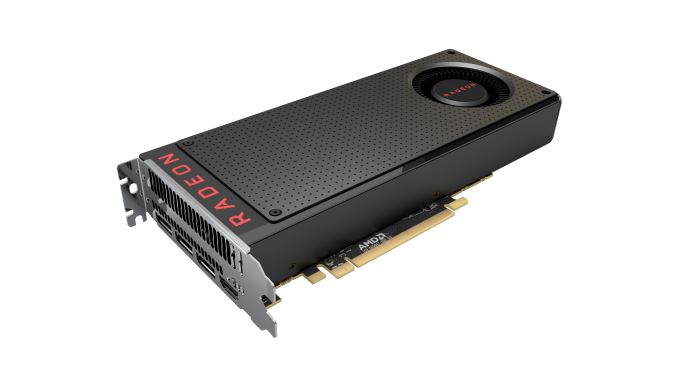

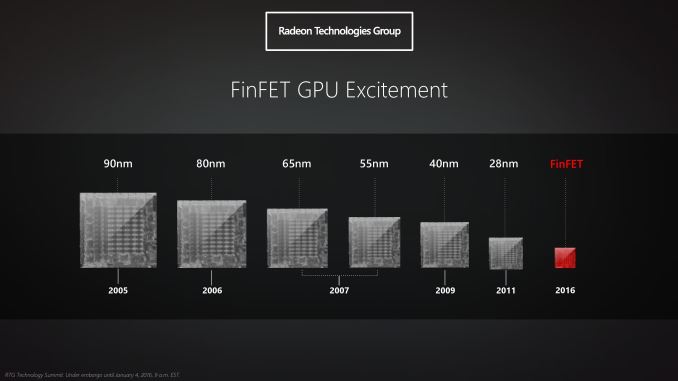
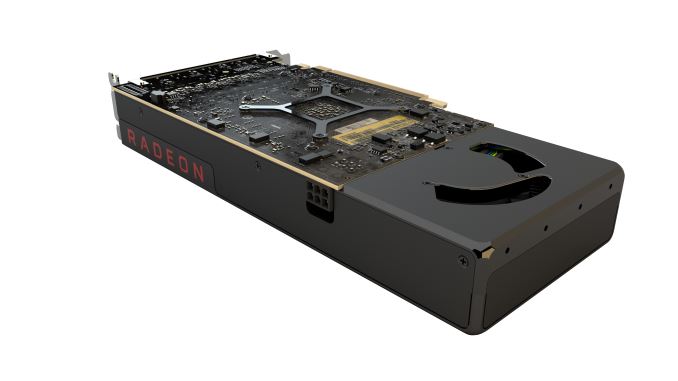




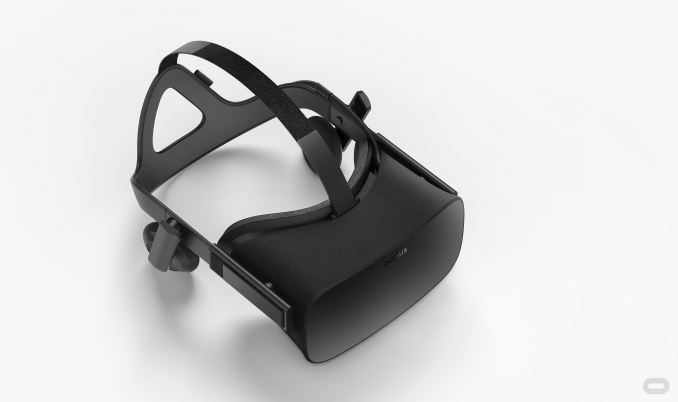









377 Comments
View All Comments
digiguy - Wednesday, June 1, 2016 - link
No way this is even close to the 1070, but I am curious to see if this can at least equal the 980 and what the price and performance of the 1060 is going to be. Could be an interesting card for TB3 enclosures, as TB3 would be less of a bottleneck (if at all) compared to a faster 1080 for instance...adamod - Wednesday, June 1, 2016 - link
maybe i am wrong here but my understanding is tb3 runs on a pcie x4 3.0 bus and from what i have seen in testing there is only a 2 or 3 percent difference between x4 and x8 and no difference between x8 and x16 in terms of performance from any graphic cards up until now....i think it was a titan x they had done the testing with but i would have to find the article or video or whatever...my guess is that either 1080/70/60 will run slightly below where it would on a full x1 interface and wont be noticeable in gameplay except for those cases where the game is right at 30fps and losing 3 percent actually will matter.........ill be closely watching this and the 1060 to see if either can do 4k at medium settings reasonably, fingers crossedmedi03 - Wednesday, June 1, 2016 - link
According to leaks (the C7) it scores better than 980 in 3dmark (between 980 and Fury non-X in fact)digiguy - Wednesday, June 29, 2016 - link
Now that the tests are here, we know that 480 is on par with 970 so clearly below 980 and as I said above not even close to 1070. Waiting to see how Nvidia responds with 1060 performance, and what price and, above all, when (as AMD has no competition in this segment for now...)Impulses - Wednesday, June 1, 2016 - link
Not sure I understand the fuzzy logic across some of these comments, people trying to approximate this card to the GTX 1070 or even judge one as the better value...AMD themselves have positioned the RX 480 right around the R9 390X. Last time I checked a GTX 1070 is right around a GTX 980 Ti and that was at least as good as 2x R9 290/390 in CF.
Seems like apples and oranges to me. All this posturing about whether it's smarter to go for the high end or the midrange first is just nonsense, anyone not desperate for an upgrade will simply wait out until both lineups are fully fleshed out.
I'm very tempted by 2x GTX 1070 to replace my R9 290, but I'm still gonna wait to see what Vega brings because I'm simply not desperate. Similarly if i was looking at the RX 480 I'd wait for the GTX 1060 to launch.
Nothing worse than kicking yourself because you bought a next gen card too early and the price dropped a couple months later in response to the competition.
medi03 - Wednesday, June 1, 2016 - link
980 Ti was NOT "at least as good" as dual 390's, what are you talking about?TheinsanegamerN - Wednesday, June 1, 2016 - link
It certainly was when crossfire didnt work, which was pretty common for new games until the profiles got updated.atlantico - Wednesday, June 1, 2016 - link
980ti "at least as good as dual 390s" when only one 390 is working lol great logic! You're aiming too low, a single 980ti is at least as good as over 9000 Crossfire 390s when only one of them is working.lulz
Impulses - Friday, June 3, 2016 - link
Looking thru old reviews 980Ti certainly seems to trade mess blows with CF R9 290, in some games avg fps are lower but the minimum is equal, in some it's better and in others it's worse.Dunno, looks pretty close to me, so "at least as good as" may not be entirely accurate (that could be interpreted as slightly better than), but ghee point stands... We're looking at vastly different levels of performance.
I've got zero interest in fanboy debates, the RX 480 looks great if you're price sensitive and only interested in 1080p gaming... But as an upgrade path from my CF R9 290 it's decidedly uninteresting.
I'm not someone that's gonna go the opposite extreme and blow over a grand on GPUs either, and like I said, I probably WILL wait for AMD's real next gen flagship before upgrading.
GTX 1070 SLI looks mighty tempting in the meantime tho...
jabber - Wednesday, June 1, 2016 - link
I really don't get the huge excitement for people wanting to look a total dork wearing a VR headset. I just think of that episode of Red Dwarf showing them galloping on a horse... I think watching people use VR will be far more entertaining than those using it.